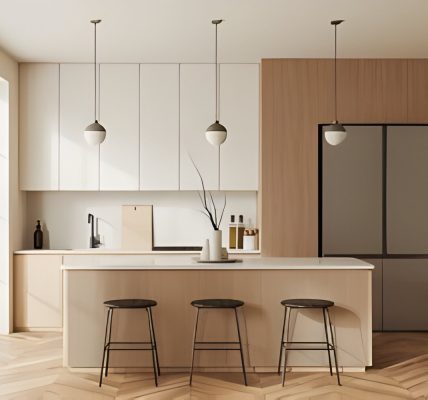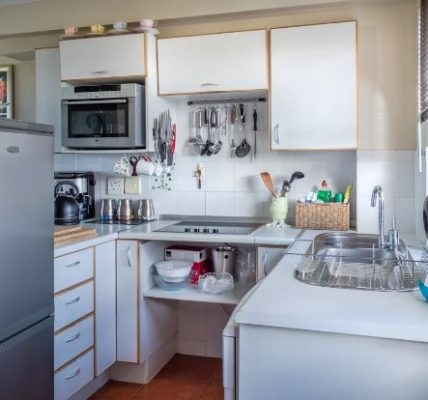When it comes to improving the accessibility and mobility within your home, you have more options than ever before. Two of the most popular choices for homeowners considering home mobility solutions are residential elevators and stairlifts. Both offer unique benefits, but choosing the right one depends on your specific needs, home layout, and budget.
In this article, we will compare residential elevators and stairlifts. This will help you make a smart choice. We will look at functionality, installation, space needs, cost, and maintenance. Whether you want to install a mobility solution for yourself or a loved one, knowing the differences is important. This will help you find the best option for your home.
What Are Residential Elevators?
Residential elevators are small lifts made for home use. These systems help people move between floors in a house. They work like the elevators in office buildings or apartment complexes, but they are smaller. Most residential elevators can hold one or more people, depending on their size.
A residential elevator is a fixed part of a home. It is built into the building’s structure. Installing it usually requires more construction work. This includes making a shaft and adding electrical systems. Sometimes, it may also need changes to the house’s structure.
Features of Residential Elevators:
- Capacity: Residential elevators can carry more weight and passengers than stairlifts. Most models support between 500 and 1,000 pounds.
- Customization: These elevators come in many styles, finishes, and sizes to match your home’s design.
- Multiple Floors: Residential elevators can reach multiple floors, making them great for larger or multi-level homes.
- Smooth and Quiet Operation: Most residential elevators run quietly and smoothly. This gives you a comfortable and low-noise experience.
What Are Stairlifts?
A stairlift is a device that helps people move up and down stairs safely. Unlike elevators, stairlifts are installed on the stairs, not in the home. The user sits on a chair or platform attached to a rail. The lift uses a motor to move them up or down.
Stairlifts are great for people with limited mobility who struggle with stairs. They are a good choice for those who do not need a full elevator. Stairlifts also work well in smaller homes or for those who cannot make big changes to their houses.
Features of Stairlifts:
- Easy to Install: Stairlifts are less invasive and require fewer structural changes to the home compared to residential elevators.
- Space-Efficient: Stairlifts take up very little space, as they are mounted on the stairs and can be folded away when not in use.
- Affordability: Stairlifts are generally more affordable than residential elevators, making them a popular option for budget-conscious homeowners.
- Compact: They only take up the width of the stairs, making them a good choice for homes with limited space.
Key Differences Between Residential Elevators and Stairlifts
To pick the best option for your home, consider the key differences between residential elevators and stairlifts. Here are some factors to help you compare the two options:
-
Functionality
The primary function of a residential elevator is to transport individuals or objects between different floors of a home. It can carry multiple passengers or even heavy furniture and other items. Residential elevators are ideal for larger homes or individuals who need to frequently move between multiple levels.
A stairlift is made to help people with mobility issues use stairs safely. It is meant for one person at a time. This device is best for those who only need help with stairs, not for moving between different levels of a home.
-
Space Requirements
A residential elevator requires dedicated space, including a shaft for the elevator to travel within. The size of the elevator and its shaft will depend on the design and the number of floors it needs to cover. This can make it a more significant construction project, particularly in homes where space is at a premium.
A stairlift, by contrast, requires no additional space other than the width of your staircase. It is installed directly onto the stairs and can be folded away when not in use. This is great for homeowners with limited space or for those who cannot make big changes to their homes.
-
Installation Process
Installing a residential elevator is a complex and time-consuming process. It often needs major changes to the home’s structure. This includes building a shaft and installing electrical systems. You may also need to adjust walls or floors. Completing this work can take several weeks, depending on the project size.
Installing a stairlift is much less invasive. It usually takes just a few hours to set up. The process involves mounting a rail system on the stairs and attaching the lift. There is no need for structural changes or major construction. This makes the installation quicker and easier.
-
Cost
The cost of a residential elevator is often much higher than that of a stairlift. This is especially true when you consider the installation. On average, a residential elevator costs between MYR 139000 to MYR 279000 or more. The price depends on the design, the number of floors it serves, and any extra features.
In contrast, the cost of a stairlift is usually much lower. Stairlifts typically range from MYR 40,000 to MYR 150,000. Prices vary based on the length and design of the stairlift, as well as the type of stairs (straight, curved, or spiral). The lower upfront cost makes stairlifts a more affordable choice for many homeowners.
-
Maintenance
Both residential elevators and stairlifts require regular maintenance to ensure they function properly. Residential elevators may require more frequent inspections and maintenance due to their complex systems, including motors, hydraulic components, and electrical systems. It’s important to schedule annual maintenance with a professional to keep the elevator in top working condition.
Stairlifts usually need less maintenance. However, they still require regular checks. This ensures the rail system is clean and the motor works well. Some manufacturers provide service contracts. Still, stairlifts are generally easier to maintain and fix than elevators.
-
Aesthetic Appeal
If design and style matter to you, residential elevators provide more options for customization. You can select from different finishes, lighting choices, and door styles. This way, you can find an elevator that matches your home’s interior. It can even be a stylish addition to your home.
While stairlifts are functional, they are less customizable in terms of design and may not blend as seamlessly with your home’s decor. However, modern stairlifts come in a variety of colors and styles, so you can still find one that suits your home.
-
Long-Term Value
The initial cost of a residential elevator is higher, but it can greatly increase your home’s value. If you plan to live in your home for many years, an elevators might be a good investment. This is especially true for larger homes, where it offers convenience and accessibility. It can also attract future buyers who need mobility solutions.
Stairlifts are cheaper, but they may not provide the same long-term value as a residential elevator. They are useful for immediate mobility needs, but they might not boost your home’s resale value as much. This is especially true for larger homes or multi-level properties.
Which One Is Right for You?
The choice between a residential elevator and a stairlift ultimately comes down to your unique needs and circumstances. Here are some factors to consider:
- For multi-story homes with multiple occupants and higher accessibility needs, a residential elevator may be the best choice. It provides long-term convenience, increases home value, and can accommodate more people and larger loads.
- For homes with narrow or steep stairs, a stairlift is a great choice. It is affordable and easy to install. It is great for people with limited mobility. This is especially helpful for those who have trouble with stairs but do not need an elevator.
Conclusion
Both residential elevators and stairlifts have their benefits, depending on your home and mobility needs. A residential elevator offers more features, higher capacity, and more customization. However, a stairlift is a more affordable, space-saving, and easy-to-install option. By thinking about your budget, home layout, and long-term needs, you can make the best choice for your home. This will help you or your loved ones move around easily and comfortably.





